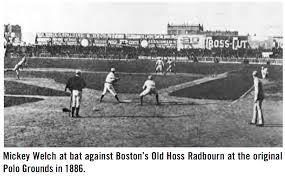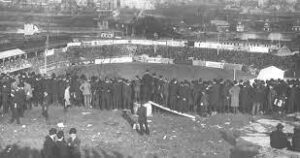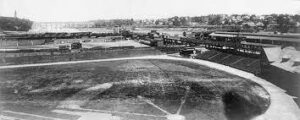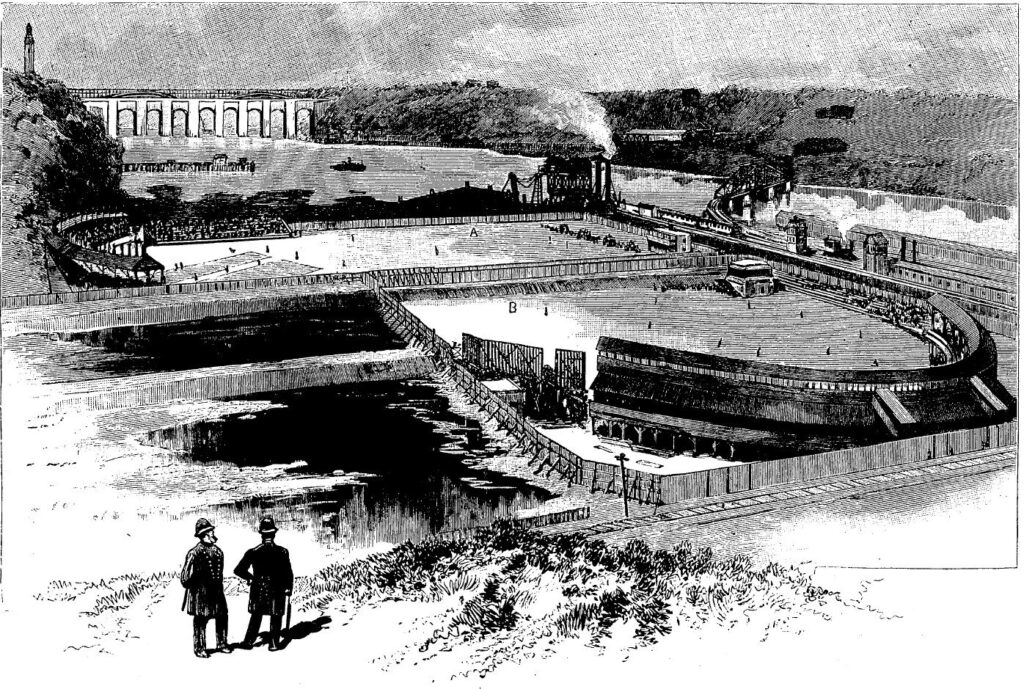Polo Grounds located in Manhattan are the cradle of professional baseball in New York City. These refer to a series of three ballparks – Polo Ground I, Polo Ground II, and Polo Ground III – built between 1876 and 1890. Once located at the Harlem River and also the Coogan’s Bluff, Polo Grounds witnessed the five championship victories by the New York Giants baseball team. It also was the home stadium for the New York Yankees, the New York Giants football team, and the New York Titans. The original stadium was the only place where polo was played. Distinguished for their “bathtub” design – deep center bordered by “very short left and right walls,” Polo Grounds witnessed a very eventful history of baseball.

The original Polo Ground was located at 110th Street, or more precisely between Fifth Avenue and Sixth Avenue. To be more specific, the ground stood across 110th Street from Central Park’s northeast corner. Opened in 1876, the ground was originally for playing polo. However, it was converted into a baseball stadium in 1880 after the New York Metropolitans took it over.
The History of Polo Ground I
The Metropolitans were a strong team that played in the American Association professional baseball league. When they got an invitation to play in the National League, the owners of the Metropolitans decided to come up with a new team in 1883. The new team was named the New York Gothams, which became the Giants in 1885 and played in New York City until 1956 before moving to San Francisco.

Source:- Wikipedia
The Giants franchise was mainly formed with the players from the newly defunct Troy Trojans, and of course, the Metropolitans. The Giants entered the National League, and the owners felt the need for constructing a grandstand and second diamond at Polo Ground. However, the Metropolitans did not stop their run at the American Association. The ballpark got divided into two halves. The Giants occupied the eastern half, and the western part was given to the Metropolitans.
Unfortunately, the dual field arrangement was not a success. Soon, the situation appeared to be unworkable as the surfacing of the western field was faulty. Also, there were some problems with other arrangements. As a solution to this problem, the Giants and the Metropolitans had played alternatively in the eastern field in the final years. And this practice continued until 1886 when the Metropolitans left Polo Ground I and shifted to the St. George Cricket Grounds, located on Staten Island.
The city crowd soon started to swoon over the Giants. Also, the Metropolitans had a good year in 1884. They started the season at Metropolitan Park, a new facility. However, it was a poor choice of venue, and the Mets were forced to come back to Polo Ground I within a few weeks of their move. This debacle of moving from one venue to another, however, did not have any impact on the performance of the Mets in the 1884 season. They did put up a brilliant show and bagged the American Association pennant.
Demolition and Relocation
New York City was expanding fast. The grid extension plan of 1889 into uptown Manhattan began to impact Polo Ground I. One day, the city workers suddenly began to cut through the fence to extend West 111 Street. No one was aware of wherefrom the orders came from. The Giants had bagged the National League Pennant and World Series just a year ago. This created public outcry and the city dwellers did not welcome the demolition. As a result, the state legislature passed a bill that gave the Giants a variance that would allow the park to remain with any destruction.

However, Governor David B. Hill vetoed the legislation and announced that his decision on the forced destruction of the ground should be respected. Finally, the Giants lost their home ground and started looking for alternatives. The Giants began their 1889 season at Oakland Park in Jersey City, New Jersey. They played their first two matches there. They again shifted to the St. George Cricket Grounds four days later. The Metropolitans continued to play on this ground until they got defunct in the 1887 season.
On 14th June, the Giants closed out a homestand at St. George Grounds, and they had nowhere to go. They relocated to New Polo Grounds. The reports published in the newspapers say that the seats from the original Polo Grounds were shifted to the stands of the New Polo Grounds. However, the Giants continued their success story at the National League for the 1889 season and won the pennant for the second consecutive year.
Purely Baseball Things To Know
- The first Major League baseball game was played at Polo Ground I in 1883. It served as the home for two professional teams, the Gothams or the Giants of the National League and the Metropolitans of the American Association.
- The Metropolitans failed to replicate their success story when they played against the Providence Grays at Polo Ground I in 1885. In the series, Old Hoss Radbourn, a Providence Pitcher, pitched three shutouts against the Mets consecutively.

- One of the earliest achievements of the Giants at Polo Ground I was the home run off Roger Connor into 112th Street and over the right-field wall. With this hit, Connor went on to create the record for career home runs that Babe Ruth broke much later on 8th July 1921.
- The earliest surviving image of the ground shows an engraving of a baseball match between Princeton University and Yale University on Decoration Day, 30th May 1882.
- The Giants had bagged the National League Pennant and World Series in 1888 at Polo Ground I.
Non-Baseball Events
The original Polo Ground was a busy sports venue. Apart from polo and professional baseball, it used to host college football and baseball. Often, the teams outside New York took part in those tournaments. Harvard and Yale even played their Thanksgiving Day football match at Polo Ground Ion on November 29, 1883, and November 24, 1887.
The History of Polo Ground II
Polo Ground II was situated at the northwest corner of the eighth and 155th intersection. Its construction began on April 19, 1890, after the demolition of the first ground. This site was overlooked to the north side by a steep promontory which was known as the Coogan’s Bluff. As it was elevated, fans used to watch the match from the Bluff without buying any tickets.
The ballpark was situated at the bottomland called the Coogan’s Hollow. Coogan’s Hollow held two ballparks – Polo Ground II and Manhattan field – separated by two very steep dirt embankments and a wooden fence covered with a canvas. It was one of the steepest and the largest embankments ever used in the major league stadiums.
Polo Ground II hosted amateur sports until the late spring of 1942. In June 1948, the Manhattan Field property was again leased by the Giants to use as a parking lot for their stadium.

Features
There is a conventional curve all around the infield. The shape of the ground makes it look closer to the center-field as compared to the left and right fields. The field was then converted to be played for other sports, such as football and track and field. It existed for more than twenty years. The Park was situated right at the bottom of the hill and surrounded by trees and buildings.
When the Giants came here in 1895, Andrew Freedman who bought the team here saw no value in the field. So, he tore off the grandstands and sold all the wood away. The field was left more as wasteland infested by weeds. In the coming years. The field was also used for cricket, during the Polo Grounds’ later years, it was used as a paved parking lot. The lot was also used for the Yankees.
Purely Baseball Things To Know

When the original Polo Grounds were confiscated, the New York Giants moved to this stadium. In 1891, the New York Giants moved to the newly built Polo Ground III. This led the owners of the ballpark to lease out it to the Manhattan Athletic Club. Thus, it became a part of Manhattan Field. The Brooklyn Dodgers had also played their home series at the Polo Ground II in late July and the early August of 1890. Babe Ruth, the Yankee legend, scored his first home run on May 1 and it went over the roof of the Polo Grounds. This shot was said to have landed in the Manhattan Field.


